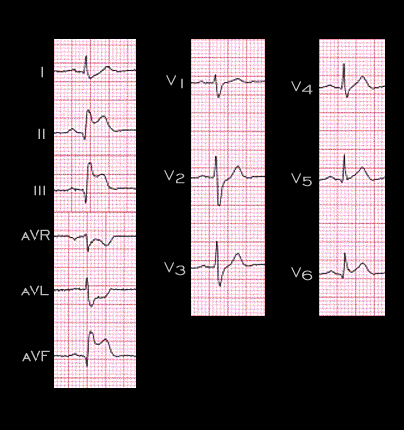
This ECG is from a 50 year old male. It was recorded 3 hours after the onset of severe retrosternal chest pain. The rhythm is sinus. There is marked ST elevation on leads II, III (slightly greater in lead III than in lead II) and aVF and lesser degrees of ST elevation in leads V5 and V6. There is also ST segment depression in leads 1 and aVL and a Q wave in leads 2,3 and aVF. This ECG is characteristic of acute transmural ischemia and infarction of the inferior and lateral portions of the left ventricle. Right ventricular involvement should also be considered because of the greater ST elevation in lead III than in lead II and right sided chest leads (V3R and V4R) should be recorded.
